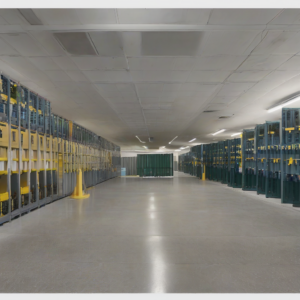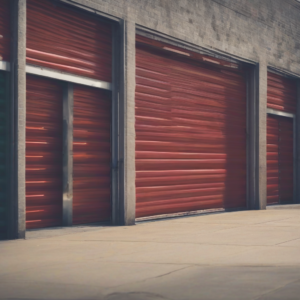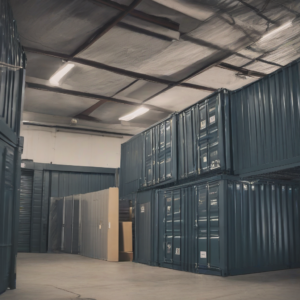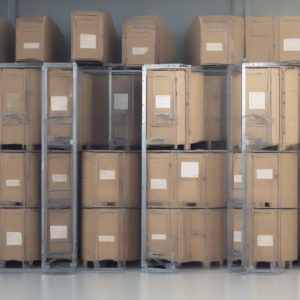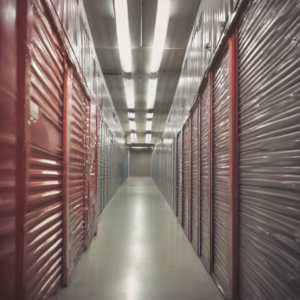Navigating the San Francisco Storage Space Landscape: A Comprehensive Guide
San Francisco, a city known for its steep hills, vibrant culture, and limited space, presents unique challenges when it comes to storage. Finding the right storage solution can be a daunting task, but understanding the various options available can significantly simplify the process. This comprehensive guide explores the diverse storage landscape of San Francisco, offering insights to help you make informed decisions based on your specific needs and budget.
Types of Storage in San Francisco
- Self-Storage Facilities: This is the most common type of storage in San Francisco, offering a wide range of unit sizes, from small lockers for personal items to large units suitable for furniture and household goods. Factors to consider include location, security features (climate control, surveillance), accessibility, and pricing.
- Mini Warehouses: Similar to self-storage facilities, mini warehouses often cater to businesses and individuals needing larger storage spaces. They might offer more flexible lease terms and potentially loading dock access.
- Off-Site Storage Companies: These companies pick up your items, store them in secure facilities, and deliver them back when needed. This is a convenient option for those who lack the time or transportation to manage storage themselves, but it tends to be more expensive.
- Mobile Storage Containers: These are large containers delivered to your location. You load them, and the company transports them to a secure storage facility. This can be advantageous for temporary storage needs, but space limitations may apply.
- Shared Storage Spaces: Some businesses or co-working spaces offer shared storage solutions. This option can be cost-effective, but it usually involves limited space and potential access restrictions.
- Document Storage and Archival Services: San Francisco has companies specializing in the secure storage and management of sensitive documents, often complying with strict regulatory requirements. This is crucial for businesses and individuals needing long-term archiving.
Factors to Consider When Choosing Storage in San Francisco
- Location: Proximity to your home or business is a critical factor. Consider accessibility, transportation costs, and the convenience of visiting your storage unit.
- Size and Type of Unit: Carefully assess your storage needs. Measure your items to determine the appropriate unit size. Consider climate-controlled options if you’re storing temperature-sensitive items.
- Security: Look for facilities with robust security measures, including surveillance cameras, secure access, and alarm systems. Insurance options are also crucial.
- Pricing and Contract Terms: Compare prices from different facilities. Pay close attention to contract terms, including minimum lease lengths, fees for early termination, and insurance requirements.
- Accessibility: Consider the facility’s hours of operation and ease of access. Check for loading dock access, elevators, and sufficient parking.
- Reputation and Reviews: Research the reputation of potential storage facilities by reading online reviews and checking for any complaints or legal issues.
- Insurance: Ensure your belongings are adequately insured against loss or damage. Most facilities offer insurance options, but you may also want to consider supplemental coverage.
Finding Storage in Specific San Francisco Neighborhoods
Storage availability and pricing can vary significantly across San Francisco’s diverse neighborhoods. Researching specific areas is essential to find suitable options.
- Downtown San Francisco: Expect higher prices and potentially limited availability due to high demand and limited space. Focus on convenience and security.
- Mission District: A balance between price and convenience. Explore options along major transportation routes.
- North Beach: Similar to Downtown, expect higher prices, but consider the proximity to public transportation.
- Financial District: High demand and prices. Prioritize security and accessibility given the business-centric nature of the area.
- Richmond District: Potentially more affordable options, but assess travel time to the facility.
- Outer Richmond: Similar to the Richmond District, with potentially more space and lower prices but increased travel time.
- Sunset District: A mix of pricing, depending on proximity to major transportation arteries. Consider the convenience factor.
Tips for Saving Money on San Francisco Storage
- Compare Prices: Obtain quotes from multiple storage facilities to compare prices and offerings.
- Negotiate Rates: Don’t be afraid to negotiate rates, especially for longer lease terms.
- Choose a Smaller Unit: Only rent the space you need. Avoid renting a larger unit than necessary to save money.
- Take Advantage of Off-Season Rates: Storage facilities often offer discounts during the off-season (typically fall and winter).
- Consider Online Booking: Many facilities offer online booking, which may provide access to discounts or promotions.
- Declutter Before Storing: Get rid of items you no longer need to minimize storage costs.
- Utilize Storage Space Efficiently: Pack items tightly and use vertical space effectively to maximize storage capacity.
Understanding San Francisco’s Storage Laws and Regulations
San Francisco has specific regulations concerning storage facilities. Familiarize yourself with local ordinances, including those related to zoning, safety, and environmental compliance. Check with the city’s Department of Building Inspection for up-to-date information.
Long-Term vs. Short-Term Storage in San Francisco
- Long-Term Storage: For long-term storage, it’s crucial to prioritize security, climate control (if necessary), and ease of access. Negotiate favorable lease terms and consider insurance options carefully.
- Short-Term Storage: For short-term needs, consider mobile storage containers or smaller, less expensive units. Be mindful of contract terms and potential early termination fees.
Moving and Storage Services in San Francisco
Several companies offer comprehensive moving and storage services in San Francisco. These services can simplify the process by handling packing, loading, transportation, and storage.
- Full-Service Movers: These movers handle every aspect of the move, including packing, loading, transportation, and unloading.
- Self-Service Movers: These services primarily focus on transportation, allowing you to handle packing and loading.
- Specialized Movers: For delicate or oversized items, consider using specialized movers with experience handling such items.
Dealing with Storage Unit Issues
- Pest Infestation: Report any signs of pest infestation to the facility management immediately. Regular inspections of your stored items can help prevent this.
- Damage to Property: Document any damage to your belongings or the storage unit and report it to the facility management and your insurance company.
- Access Issues: If you experience problems with access to your unit, contact the facility management to resolve the issue promptly.
- Contract Disputes: Consult a lawyer if you have a contract dispute with a storage facility.
